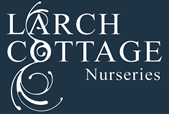Advice
Lime Tolerant Rhododendrons
What is an Inkarho Rhododendron?
An inkarho Rhododendron is a new lime-tolerant rhododendron rootstock which has taken over 20 years to develop and on to which many different and popular rhododendrons are being grafted.
Where is the best place to plant a Inkarho Rhododendron?
Although they appear rugged in the landscape, rhododendrons have a delicate root system, so proper siting, even with this breakthrough rootstock, is very important. It’s best to choose an eastern or northern slope because they are easily damaged by drying winds from the south or west. Here, they are less exposed to unexpected temperature changes in late spring and early fall.
How do I protect my Inkarho Rhododendron from the wind?
If you live in a windy spot, it’s a good idea to provide wind protection for your rhododendrons. Buildings and slopes act as good barriers, but there’s no replacement for evergreen shrubs and trees, which also make the perfect foil for their showy flowers. Did you know? Many people think that rhododendrons are shade lovers, but too much shade often prevents them from blooming well, and can lead to root rot if the soil does not dry out consistently in between rains or watering. Filtered sun is ideal, where trees are pruned high enough for the morning sun to pour through the branches.
What is the best way to prepare the soil for planting an Inkarho Rhododendron?
Although this revolutionary rootstock will allow people to grow rhododendrons where they’ve never been able to before, please do continue to consider soil preparation. It never hurts and a happy plant will be even happier with some simple soil amendments and proper planting depths. Highly organic, well-drained soil is the best medicine for beautiful rhoodendrons, so while you’re preparing your bed remember these helpful tips: Completely soak the root ball before removing the pot. Dig a hole twice as wide as the root ball, but only 3/4 as deep. Be sure to break up any hard, clumping ground as you prepare. A few extra steps now will have long-term benefits for your plants. Rhododendrons love Organic Matter! A large amount of organic matter is helpful for good growth. A mixture of 50% composted leaf mold (preferably from pine or oak leaves) and 50% good garden topsoil is recommended. Avoid using peat moss, as soils with peat added can hold excessive amounts of moisture in winter and spring. Cover the base of the hole with a small amount of mixture, and place your plant so the top of the root ball is slightly above ground level-2”.
How deep should I plant an Inkarho Rhododendron?
Never plant a Rhododendron deeper than the soil line in its container. Planting shallow is always better than planting too deep. Continue to fill the hole, tap the soil lightly using your feet or a shovel, and soak with water. A heavy mulch (1-2” thick) of compost (decomposed bark, leaves or other organic matter) helps conserve moisture around the roots and will prevent winter injury. Mulch will prevent scorch and bark split in the winter months in colder climates. Mulch is beneficial for the plants year-round, but be careful not to mulch too high on the stems. Just enough, but not too much water please! Rhododendrons are relatively easy to care for once they’re established. Excessive watering can be a problem, especially in the fall and winter. Take care to assess the moisture retention in your soil as the days get shorter and the nights cool down. Wet soils often lead to root rot and are the biggest cause of plant death. Fertilizing Rhododendron are not heavy feeders and grow well at relatively low nutrient levels. We recommend a slow release, coated fertilizer applied in April for best overall results. Do not feed after the first of July. Late feeding can force tender fall growth that will likely be killed by the coming winter. Hoof and horn meal or any other nitrogen source can be sprinkled around the base in early summer to promote flowering.
Visit Rhododendron – Inkarho for more

